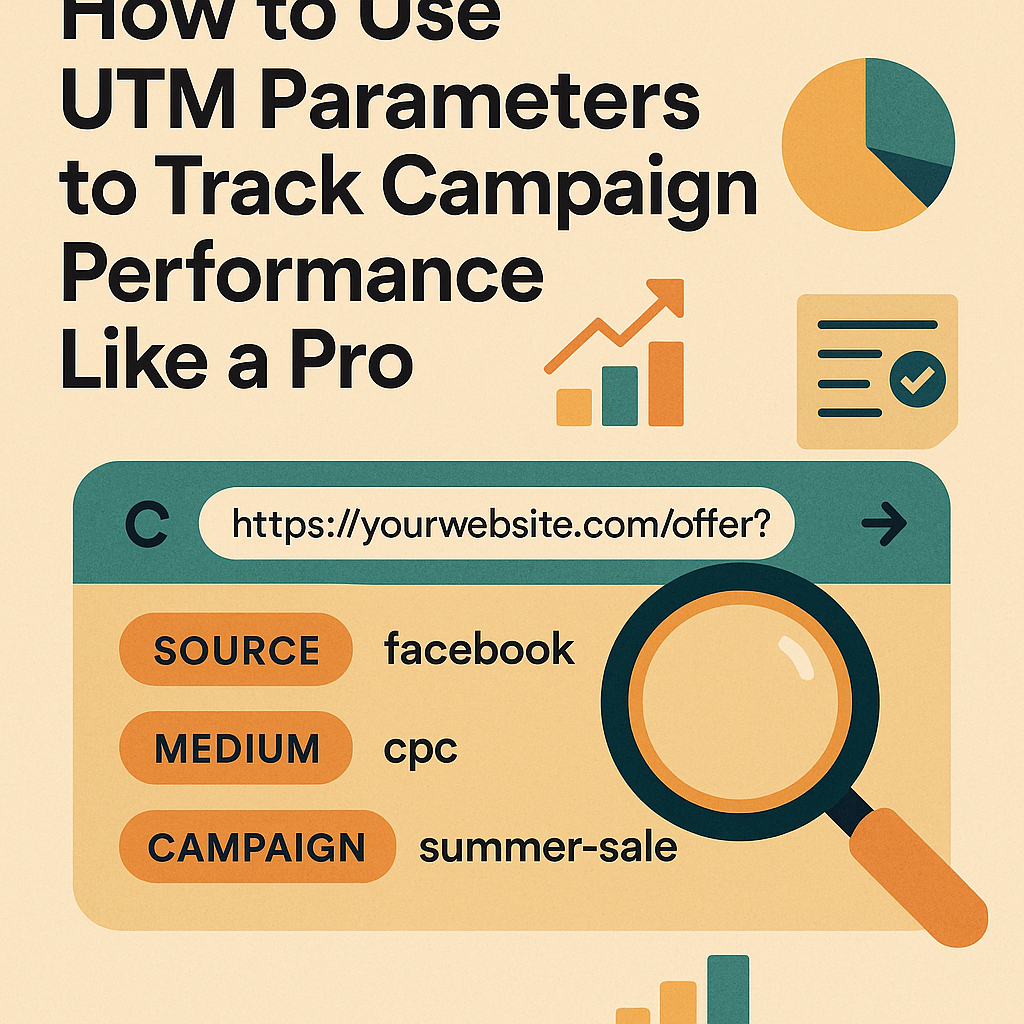Running paid traffic without proper tracking is like flying blind — you might land somewhere, but you’ll have no idea how you got there.
That’s where UTM parameters come in. These small bits of text added to your URLs give you the power to see exactly where your traffic comes from, which campaigns are performing, and how users behave once they land on your site.
In this article, you’ll learn what UTMs are, how to use them correctly, and how to analyze campaign data in tools like Google Analytics 4 — even if you’re a beginner.
What Are UTM Parameters?
UTM parameters (Urchin Tracking Module) are tags you add to the end of a URL to track where your traffic is coming from.
Here’s an example of a URL with UTM tags:
arduinoCopiarEditarhttps://yoursite.com/offer?utm_source=facebook&utm_medium=cpc&utm_campaign=summer-sale
These tags tell analytics tools:
- Where the visitor came from (Facebook, Instagram, email)
- How they got there (paid click, organic, referral)
- Which campaign drove them
- What ad or keyword they clicked (optional)
Why UTMs Are Essential for Traffic Managers
- Track performance across platforms (Facebook, Google, email, etc.)
- Compare which campaigns or ads bring better results
- Understand how users behave after clicking your ad
- See traffic sources inside Google Analytics and CRM tools
- Make smarter decisions about where to invest your budget
Without UTM tracking, all your traffic might show up as “direct” or “referral,” which tells you nothing useful.
The 5 Main UTM Parameters
| Parameter | Required? | What It Tracks |
|---|---|---|
utm_source | ✅ Yes | The platform (e.g., facebook, google) |
utm_medium | ✅ Yes | Type of traffic (e.g., cpc, email) |
utm_campaign | ✅ Yes | Campaign name (e.g., blackfriday2025) |
utm_term | Optional | Keyword (used mostly for Google Ads) |
utm_content | Optional | Specific ad variation or CTA |
You don’t have to use all five — just the first three will cover most needs.
How to Build UTM-Tagged URLs (The Easy Way)
Use Google’s free tool:
📍 Campaign URL Builder
Example:
You’re running a Facebook ad for a lead magnet during your spring campaign:
| Field | Value |
|---|---|
| Website URL | https://yourdomain.com/ebook |
| utm_source | facebook |
| utm_medium | cpc |
| utm_campaign | spring-leads |
| utm_content | video-ad-1 |
Final URL:
arduinoCopiarEditarhttps://yourdomain.com/ebook?utm_source=facebook&utm_medium=cpc&utm_campaign=spring-leads&utm_content=video-ad-1
💡 Shorten long URLs with Bitly or Rebrandly for clean sharing.
Where to Use UTM Links
Use them in any external campaign where you control the link:
- Facebook or Instagram ads
- Google Ads (manual tracking)
- Email newsletters
- WhatsApp campaigns
- Affiliate links
- QR codes
- Banner ads
🚫 Never use UTM tags for internal website links — it will break your data.
How to Analyze UTM Traffic in Google Analytics 4
Once UTM-tagged traffic lands on your site, it’s tracked automatically in GA4.
To see it:
- Go to Google Analytics 4
- Navigate to:
Reports > Acquisition > Traffic Acquisition - Use filters like:
- Session source / medium
- Session campaign
- Landing page + campaign
- You can also use:
- Exploration reports for deeper breakdowns
- Conversion tracking to connect UTMs to form submissions, sales, etc.
💡 Combine with goals/events to track which UTMs lead to real conversions.
Tips for Naming UTM Parameters
✅ Be consistent:
- Always use lowercase (
utm_source=facebook, notFacebook)
✅ Use dashes or underscores (no spaces)
✅ Name campaigns clearly:
- Good:
utm_campaign=blackfriday-sale - Bad:
utm_campaign=bf2025-crazytestagainX02
✅ Keep it readable:
So you can scan it later and immediately know what it refers to.
Pro Tips for Traffic Managers
- Use
utm_contentto A/B test creatives (e.g., image-vs-video) - Use dynamic UTM insertion in Google Ads
- Document all campaigns in a Google Sheet for consistency
- Use URL parameters in conjunction with Facebook Pixel and Google Tag for full tracking coverage
UTM Tracking in CRMs and Email Tools
Many email tools (MailerLite, ConvertKit, ActiveCampaign) and CRMs (HubSpot, RD Station) also recognize UTM data — allowing you to:
- Track lead source
- Score contacts
- Trigger automations based on the UTM campaign
💡 Example: Tag all leads from utm_campaign=leadgen-mar25 with “Spring Funnel”
Final Thoughts: Track Like a Pro, Scale With Confidence
As a traffic manager, your job isn’t just to run ads — it’s to understand what’s working, what’s not, and why.
UTM parameters give you the visibility you need to:
- Prove ROI to clients
- Identify winning campaigns
- Make smarter optimization decisions
- Scale what’s working — and stop what’s not
Start using UTMs today and watch your data become your most powerful tool.
